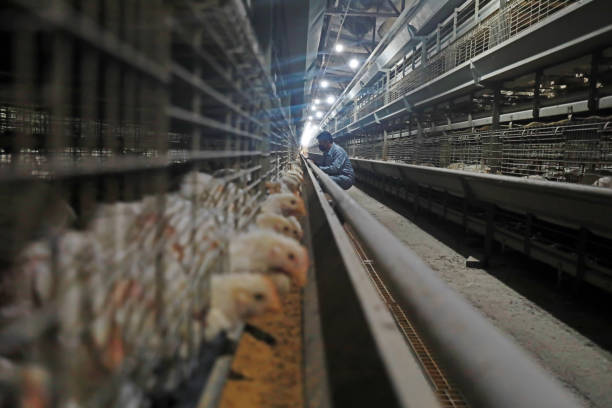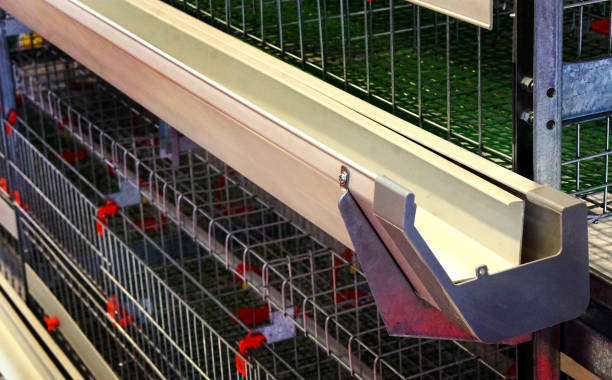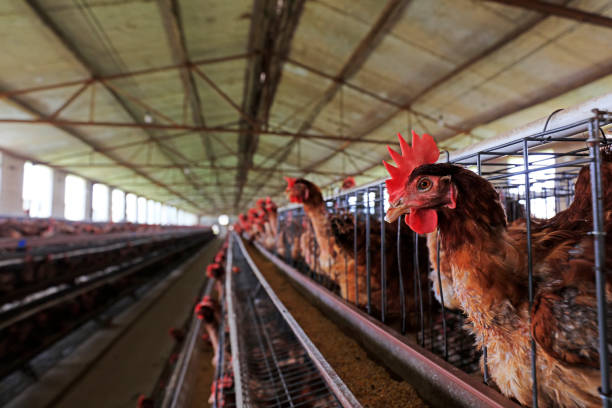
Starting a Profitable Poultry Farm in South Africa: Your Complete Guide
Starting a Profitable Poultry Farm in South Africa: Your Complete Guide
South Africa’s poultry industry is booming, presenting a lucrative opportunity for aspiring entrepreneurs. With a growing demand for chicken and eggs, starting a poultry farm can be a rewarding venture, offering both financial independence and contributing to the nation’s food security. This comprehensive guide outlines everything you need to know to establish and run a successful poultry farm in South Africa, from initial planning to daily operations and long-term growth strategies.
**1. Market Research and Business Planning: Laying the Foundation for Success**
Before investing a single rand, thorough market research is crucial. Understand the local demand for poultry products in your target area. Are you aiming for the egg market (layers) or the meat market (broilers)? Or both? Investigate your potential customer base: local markets, supermarkets, restaurants, hotels, or direct sales to consumers. Analyze your competition: who are the existing poultry farmers in the area, what are their strengths and weaknesses, and what prices are they charging?
Once you have a good grasp of the market, develop a comprehensive business plan. This should include:
* **Executive Summary:** A brief overview of your business, its goals, and objectives.
* **Company Description:** Detail the nature of your poultry farm, its mission, and vision.
* **Market Analysis:** Elaborate on your market research findings, including demand, competition, and target market.
* **Products and Services:** Specify what poultry products you will offer (eggs, meat, live chickens) and any value-added services (e.g., processing, delivery).
* **Marketing and Sales Strategy:** Outline how you will attract customers and sell your products. This should include pricing strategies, distribution channels, and promotional activities.
* **Management Team:** Describe the structure of your management team and the experience of each member.
* **Operational Plan:** This is a detailed breakdown of how you will run your farm, including housing, feeding, health management, and waste disposal.
* **Financial Plan:** This is the most critical part of your business plan. It should include:
* Start-up Costs: A detailed list of all expenses required to start your farm (land, housing, equipment, chicks, feed, etc.).
* Funding Sources: How you will finance your start-up costs (personal savings, loans, grants, etc.).
* Projected Income Statement: A forecast of your revenue, expenses, and profit over a specific period (e.g., 3-5 years).
* Cash Flow Statement: A projection of your cash inflows and outflows.
* Balance Sheet: A snapshot of your assets, liabilities, and equity.
* Break-Even Analysis: Determine the point at which your revenue equals your expenses.
* **Appendix:** Include any supporting documents, such as market research reports, permits, and licenses.
**2. Choosing Your Poultry Type: Layers vs. Broilers**
The two main types of poultry farming are layer farming (for egg production) and broiler farming (for meat production). Each has its own specific requirements and considerations.
* **Layer Farming:**

* **Advantages:** Relatively stable income stream, less labor-intensive than broiler farming, potentially higher profit margins per bird.
* **Disadvantages:** Requires a longer time before generating income (chickens start laying eggs around 5-6 months), susceptible to egg-related diseases, requires specific feeding regimes to optimize egg production.
* **Considerations:** Choose a good layer breed (e.g., Lohmann Brown, Hy-Line Brown), provide adequate housing with nesting boxes and roosting perches, implement a strict biosecurity program to prevent diseases, manage manure effectively.
* **Broiler Farming:**
* **Advantages:** Faster return on investment (chickens are ready for slaughter in 6-8 weeks), high demand for chicken meat, relatively simple management compared to layers.
* **Disadvantages:** More labor-intensive than layer farming, requires strict biosecurity to prevent rapid disease outbreaks, fluctuating market prices can impact profitability, higher feed consumption than layers.
* **Considerations:** Choose a fast-growing broiler breed (e.g., Cobb 500, Ross 308), provide adequate space for chickens to move around, ensure proper ventilation and temperature control, implement a strict vaccination program.
* **Dual Purpose Farming:**
* Some farmers consider dual purpose breeds that provide both eggs and meat. However, these breeds typically don’t excel in either category like specialized breeds.
**3. Housing and Equipment: Creating a Comfortable and Efficient Environment**
Proper housing is essential for the health, welfare, and productivity of your chickens. Choose a housing system that suits your budget, climate, and management style.
* **Housing Options:**
* **Free-Range:** Chickens roam freely outdoors, allowing for natural foraging and exercise. Advantages include improved animal welfare and potential for premium pricing. Disadvantages include higher risk of predation, disease, and theft.
* **Deep Litter System:** Chickens are kept in a house with a thick layer of bedding material (e.g., wood shavings, straw, rice husks). Advantages include good insulation, natural manure management, and relatively low cost. Disadvantages include potential for ammonia buildup and disease outbreaks if not managed properly.
* **Slatted Floor System:** Chickens are kept on elevated slatted floors, allowing manure to fall through. Advantages include improved hygiene and reduced ammonia levels. Disadvantages include higher initial cost and potential for foot problems.
* **Battery Cage System:** Chickens are kept in individual cages. Advantages include good control over individual bird performance and reduced risk of cannibalism. Disadvantages include high initial cost and are considered to be ethically concerning by some.
**Note on Cages:** Modern, well-designed cage systems, particularly for layers, can offer advantages in terms of space utilization, hygiene, and egg collection efficiency. When choosing cages, ensure they meet animal welfare standards and provide adequate space and ventilation for the birds. Consider automated systems for feeding, watering, and egg collection to improve efficiency. However, be mindful of consumer preferences and potential regulations regarding cage systems, as some markets prefer or require cage-free eggs.
* **Essential Equipment:**
* **Feeders:** Provide adequate feeder space for all chickens to access feed easily. Choose feeders that minimize feed wastage.
* **Waterers:** Ensure a constant supply of clean, fresh water. Nipple drinkers are a popular choice as they reduce water wastage and contamination.
* **Ventilation System:** Proper ventilation is crucial for removing excess moisture, ammonia, and dust from the house. Fans, vents, and natural ventilation can be used.
* **Heating/Cooling System:** Depending on the climate, you may need to provide heating or cooling to maintain a comfortable temperature for your chickens.
* **Lighting System:** Provide adequate lighting to stimulate egg production in layers. Use energy-efficient LED lights.
* **Nesting Boxes (for Layers):** Provide comfortable and private nesting boxes for chickens to lay their eggs.
* **Manure Management System:** Implement a system for collecting and disposing of manure safely and effectively.
**4. Sourcing Chicks and Feed: The Foundation of a Healthy Flock**
The quality of your chicks and feed will directly impact the health, growth, and productivity of your chickens.
* **Sourcing Chicks:** Purchase chicks from reputable hatcheries that guarantee disease-free stock. Choose chicks that are vaccinated against common poultry diseases. Consider the breed characteristics and choose a breed that is well-suited to your climate and management style.
* **Feeding:** Feed accounts for a significant portion of the operating costs of a poultry farm. Purchase high-quality feed from reputable suppliers. Provide appropriate feed for the age and type of chicken. Follow recommended feeding programs to ensure optimal growth and production. Consider formulating your own feed to save money, but only if you have the expertise and resources to do so.
**5. Health Management and Biosecurity: Protecting Your Investment**
Poultry diseases can decimate a flock and wipe out profits. Implement a strict biosecurity program to prevent diseases from entering your farm.
* **Biosecurity Measures:**
* Restrict access to your farm.
* Implement a foot bath at the entrance to the farm.
* Wear clean protective clothing (e.g., overalls, boots) when entering the chicken house.
* Wash hands thoroughly before and after handling chickens.
* Control rodents and pests.
* Dispose of dead birds properly.
* Regularly clean and disinfect the chicken house and equipment.
* Source chicks from disease-free hatcheries.

* Quarantine new birds before introducing them to the flock.
* **Vaccination Program:** Implement a vaccination program to protect your chickens against common poultry diseases. Consult with a veterinarian to develop a vaccination schedule that is appropriate for your area.
* **Disease Monitoring:** Regularly monitor your chickens for signs of disease. Consult with a veterinarian if you suspect a disease outbreak.
* **Common Poultry Diseases in South Africa:** Newcastle disease, avian influenza, infectious bronchitis, coccidiosis, fowl pox.
**6. Waste Management: Responsible and Sustainable Practices**
Proper waste management is essential for protecting the environment and preventing disease.
* **Manure Management:** Manure can be used as a valuable fertilizer for crops. Compost the manure before applying it to the land. Store manure properly to prevent nutrient runoff and odor problems.
* **Mortality Management:** Dispose of dead birds promptly and properly. Composting, burying, or incineration are common methods.
**7. Marketing and Sales: Reaching Your Customers**
Effective marketing and sales are crucial for selling your poultry products and generating profits.
* **Direct Sales:** Sell directly to consumers at farmers’ markets, roadside stands, or through online platforms.
* **Wholesale:** Sell to local markets, supermarkets, restaurants, hotels, and other businesses.

* **Value-Added Products:** Consider processing your poultry products (e.g., cut-up chicken, eggs in cartons) to increase their value.
* **Branding and Packaging:** Develop a strong brand identity and attractive packaging to differentiate your products from the competition.
* **Online Marketing:** Use social media, email marketing, and a website to promote your farm and products.
**8. Regulations and Permits: Ensuring Compliance**
Ensure you comply with all relevant regulations and obtain the necessary permits and licenses to operate your poultry farm legally.
* **Registration:** Register your business with the Companies and Intellectual Property Commission (CIPC).
* **Environmental Permits:** Obtain the necessary environmental permits from the Department of Environmental Affairs.
* **Animal Welfare Regulations:** Comply with animal welfare regulations to ensure the humane treatment of your chickens.
* **Food Safety Regulations:** Comply with food safety regulations to ensure the safety of your poultry products.
**9. Financial Management: Keeping Track of Your Progress**
Good financial management is essential for the long-term success of your poultry farm.
* **Record Keeping:** Maintain accurate records of all income and expenses.
* **Budgeting:** Develop a budget to track your progress against your financial goals.
* **Cash Flow Management:** Manage your cash flow effectively to ensure you have enough money to meet your obligations.
* **Financial Analysis:** Regularly analyze your financial performance to identify areas for improvement.
**10. Continuous Learning and Improvement: Staying Ahead of the Curve**
The poultry industry is constantly evolving. Stay up-to-date on the latest trends and technologies by attending industry conferences, reading trade publications, and networking with other poultry farmers. Continuously seek ways to improve your efficiency, productivity, and profitability.
Starting a profitable poultry farm in South Africa requires careful planning, hard work, and dedication. By following this guide and continuously learning and adapting, you can increase your chances of success in this rewarding industry. Remember to seek advice from experienced poultry farmers and agricultural extension officers to help you navigate the challenges and opportunities that lie ahead.
